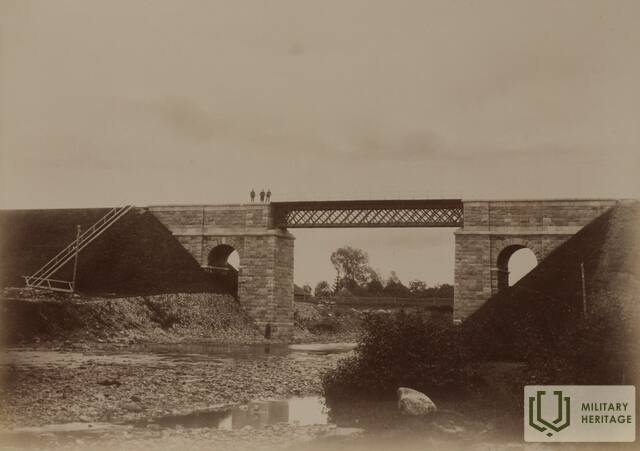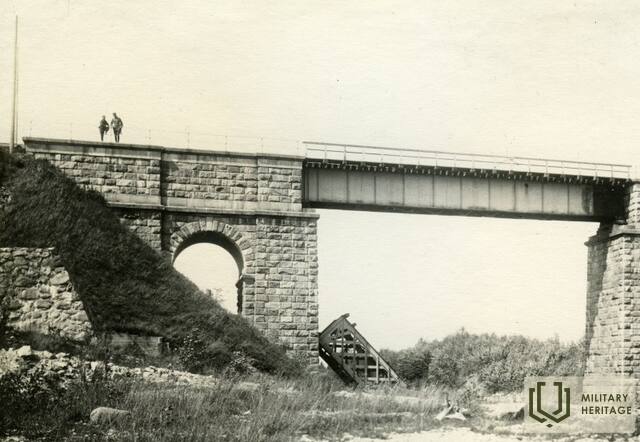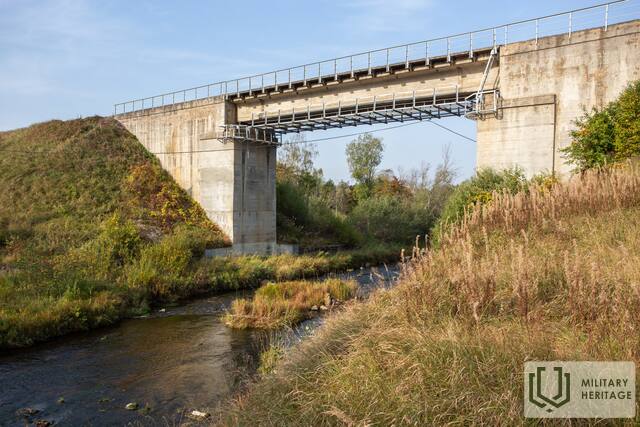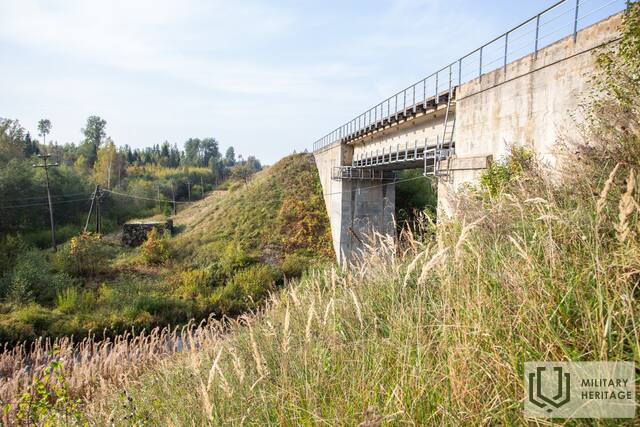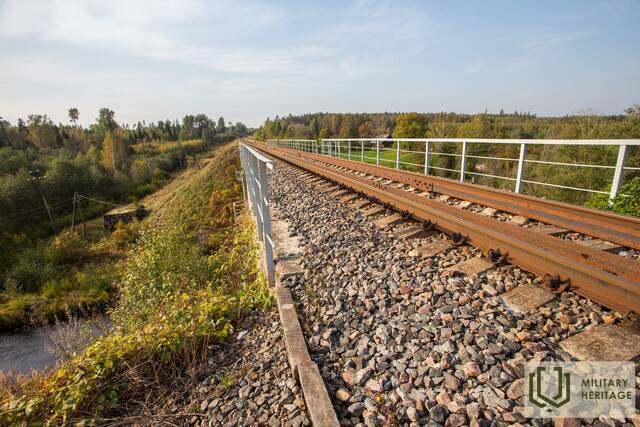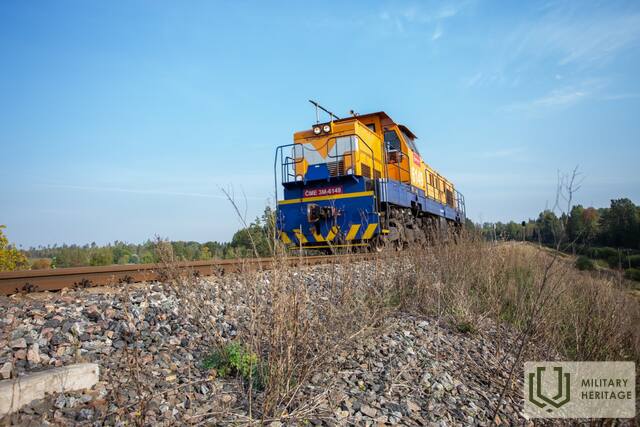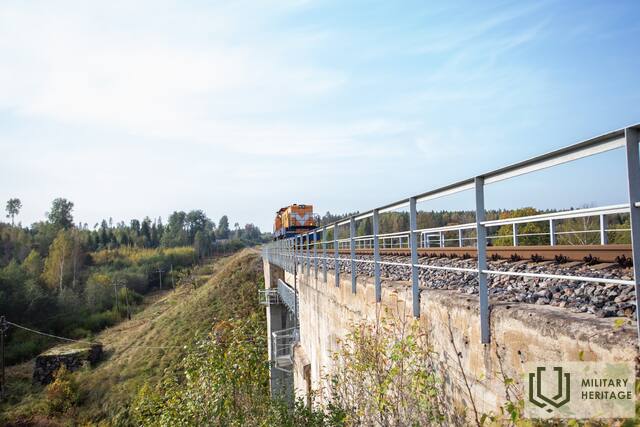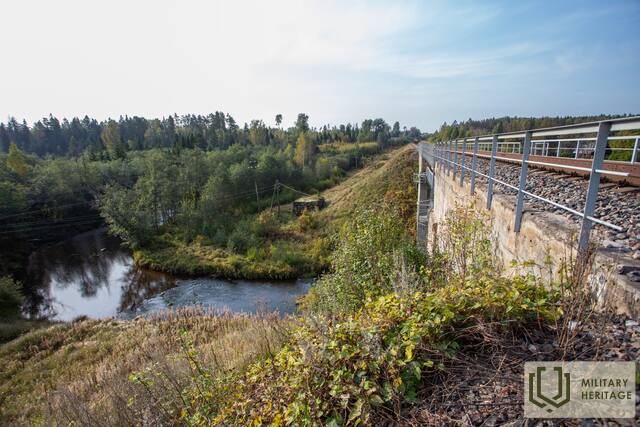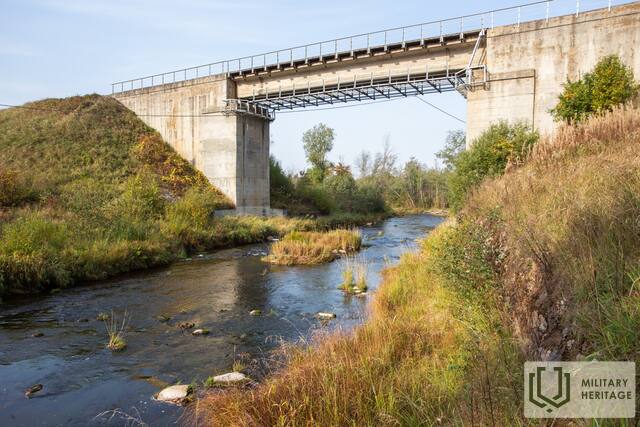Railway bridge over Amata Infrastruktūra


 86
86



Located in Drabešu parish, Cēsis region, near the recreation place "Meža kaujas".
There is a railway bridge over Amata.
The railway bridge over Amata played a very important role throughout the War of Independence, because on June 5, 1919, the first battle of the Estonian army's armed trains with the Baltic Landesver units took place here. Landeswehr, knowing that an armed train was approaching, nominated a railway bridge and took a position at the Amatas home on the river bank, ready for possible warfare. The bridge over Amata was the border between Estonian forces and the Germans.
Historical evidence of the events at the Amata Bridge has not been preserved. As Latvians did not take part in these events, there are no narratives of their memories, there are memories from Estonian soldiers and other sources. It can be said that this was an Estonian-American joint battle against the Landeswehr, because there was an American officer on the Estonian armored train, who later fought in World War II as well. In general, many future World War II officers and commanders took part in the battles of Cēsis, especially on the German side.
The Estonian armed train arrived in Cēsis on June 2, 1919, a day later went to Ieriķi, where talks took place with the landlord, which was unsuccessful, and on June 5, when the armed train approached the Amata bridge again, a collision with the Germans began. A day later, the armed train also took part in the battles near Cēsis, where it helped the soldiers of the Pupils' Company who were threatened with siege. Although the Germans tried to dismantle the rails to cut off the train's retreat, it managed to retreat across the Rauna bridge.
On the night of June 23, 1919, during the battles of Cēsis, the landesver left Cēsis and retreated to the Amata river line. When they retreated, the Germans burned down the house of the Cēsis Latvian Society and blew up a bridge over Amata.
Panaudoti šaltiniai ir literatūra:
http://edruva.lv/vieta-kur-sakas-cesu-kaujas
https://www.la.lv/vieni-no-latvijas-neatkaribas-aizstavjiem-dzelzcela-apsardze
Susijusi laiko juosta
Susijusios temos
Susijusi istorija
Cėsių mūšis Amatos upės pakrantėje
Prie tilto per Amatą vokiečių Landesveras puola deryboms atvykusį Estijos šarvuotąjį traukinį. Estai atidaro priešugnį, vokiečiai atmušami, o šarvuotas traukinys grįžta į Cėsis.
Cėsių mūšio pradžia, eiga ir pabaiga
Pergalei Cėsių mūšyje buvo lemta tapti lūžiu latvių ir estų kovoje už savo šalies nepriklausomybę. Ši pergalė padarė tašką Andrievo Niedros vyriausybės ir vokiečių generolo Rüdigerio von der Goltzo planams užkariauti Baltijos šalis. Vietoj to Liepojoje savo veiklą atnaujino Laikinoji Latvijos vyriausybė, vadovaujama Kārlio Ulmanio.
Mūšis prie tilto per Amatos upę
Cėsių mūšis yra vienas reikšmingiausių Latvijos nepriklausomybės karo etapų, taip pat užima reikšmingą vietą Estijos nepriklausomybės kovų istorijoje.




